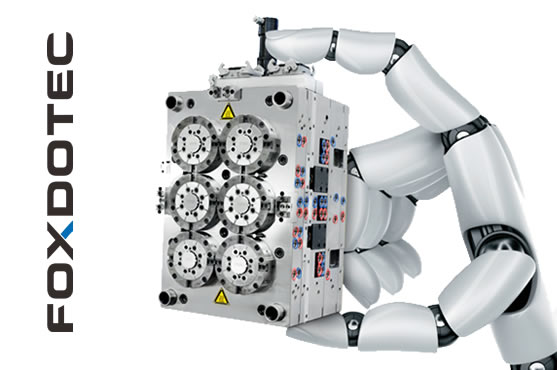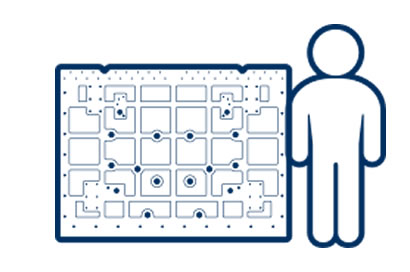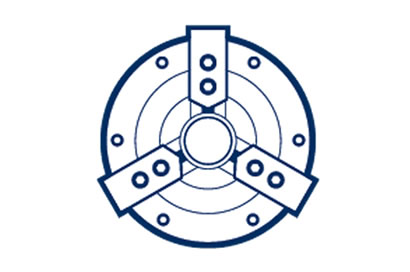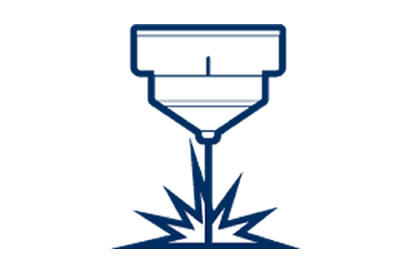Drilling Machining Services
Drill into perfection with our Drilling Machining Services! Powered by cutting-edge technology and expertise, we offer precise drilling solutions tailored to your unique requirements. Say goodbye to inaccuracies and hello to flawless results. Elevate your projects with our comprehensive Drilling Machining Services. Experience efficiency and precision like never before—partner with us today!
Drilling
What is Drilling?
Drilling is a machining process that involves creating holes in a workpiece using a rotating cutting tool called a drill bit. It is one of the most common and fundamental machining operations, used in various industries for producing holes of different sizes and depths in a wide range of materials.
The drilling process typically involves the following steps:
- Workpiece Setup: Secure the workpiece on the drilling machine table using clamps, vises, or fixtures. Ensure that the workpiece is properly positioned and aligned for accurate hole drilling.
- Tool Selection: Select the appropriate drill bit for the desired hole size, material, and depth. Drill bits come in various types, such as twist drills, center drills, and countersinks, each designed for specific applications.
- Drilling Operation: Rotate the drill bit at high speed while applying downward pressure to penetrate the workpiece material. The drill bit removes material in the form of chips, creating a hole with the desired diameter and depth.
- Coolant and Lubrication: Use coolant or lubricant during the drilling process to reduce friction, dissipate heat, and improve chip evacuation. This helps prolong tool life, improve surface finish, and prevent workpiece distortion.
- Chip Removal: Clear chips and debris from the hole and drill bit regularly during the drilling process to prevent chip recutting and ensure smooth operation.
- Finishing: After drilling, the workpiece may undergo additional finishing operations such as deburring or chamfering to remove sharp edges and improve surface quality.
- Quality Control: Inspect the drilled holes to ensure they meet the specified dimensions and tolerances. This may involve dimensional measurement, visual inspection, or using specialized equipment such as bore gauges.
Drilling machines come in various types, including bench drills, pillar drills, and CNC (Computer Numerical Control) drilling machines. Each type offers different capabilities and features suited to specific applications and production requirements.
Precision Injection Mold


How to improve the quality of Drilling?
Improve Drilling Process
To enhance the quality of drilling processes, consider the following strategies:
- Proper Workpiece Setup: Ensure that the workpiece is securely clamped or fixtured on the drilling machine table, properly aligned, and positioned for accurate hole drilling. This helps prevent movement or misalignment during drilling.
- Tool Selection and Maintenance: Choose high-quality drill bits appropriate for the material, hole size, and depth. Maintain drill bits properly by sharpening or replacing them when necessary to ensure optimal cutting performance and hole quality.
- Optimize Cutting Parameters: Adjust drilling parameters such as spindle speed, feed rate, and depth of cut to achieve optimal drilling results. Experiment with different parameter settings to find the best combination for the desired outcome.
- Implement Coolant and Lubrication: Use coolant or lubricant during the drilling process to reduce friction, dissipate heat, and improve chip evacuation. This helps prolong drill bit life, prevent workpiece distortion, and enhance hole quality.
- Clear Chips Regularly: Clear chips and debris from the hole and drill bit regularly during the drilling process to prevent chip recutting and ensure smooth operation. This helps maintain drilling accuracy and surface finish.
- Inspect and Measure Holes: Inspect the drilled holes to ensure they meet the specified dimensions and tolerances. Measure hole diameter, depth, and positional accuracy using appropriate tools such as calipers, micrometers, or bore gauges.
- Deburring and Chamfering: After drilling, deburr the edges of the hole to remove sharp burrs and improve surface quality. Chamfering can also be performed to create a beveled edge around the hole opening, facilitating assembly and improving aesthetics.
- Continuous Improvement: Continuously evaluate and improve drilling processes based on feedback and lessons learned. Monitor drilling performance, identify areas for improvement, and implement best practices to enhance overall quality and efficiency.
By implementing these strategies and focusing on continuous improvement, you can enhance the quality of drilling processes and achieve better results in terms of hole accuracy, surface finish, and overall part quality.

CNC Machining
CNC machining is a computer-controlled manufacturing process that utilizes pre-programmed software to dictate the movement of machinery and tools. This technology enables the precise cutting, drilling, and shaping of materials such as metal, plastic, and wood to create intricate components with high accuracy and consistency.
Read More
Precision Grinding
Precision grinding is a manufacturing process that involves the removal of material using abrasives to achieve extremely tight tolerances and surface finishes. used to produce components with intricate shapes, precise dimensions, and smooth surfaces. Precision grinding techniques include cylindrical grinding, surface grinding, and internal grinding.
Read More
Electrical Discharge Machining
Electrical Discharge Machining (EDM) is a non-traditional machining process that utilizes electrical discharges to erode material from a workpiece. It is particularly useful for machining complex shapes and hardened materials that are difficult to machine with conventional methods. EDM can achieve high precision and surface quality.
Read MorePrecision machining and manufacturing involve the use of advanced techniques and equipment to produce highly accurate and intricate components with tight tolerances. It requires expertise in machining processes, material properties, and quality control methods to ensure the production of high-quality parts for various industries.
Key Aspects of Understanding Injection Molds
- Design Principles: Understand the principles of injection mold design, including considerations for part geometry, material flow, cooling, and ejection.
- Materials and Construction: Explore the materials commonly used in injection mold construction, such as tool steel, aluminum, and beryllium copper.
- Manufacturing Techniques: Gain insights into the manufacturing processes used to produce injection molds, including machining, EDM, and CNC milling.
- Mold Maintenance and Repair: Learn about the importance of mold maintenance and preventive maintenance schedules to ensure the longevity and performance of injection molds.
- Tooling Standards and Regulations: Familiarize yourself with industry standards and regulations related to injection mold design and manufacturing.
- Advanced Technologies: Stay informed about advancements in injection mold technology, such as rapid prototyping, additive manufacturing (3D printing), and simulation software.
- Cost Considerations: Gain insights into the cost factors associated with injection mold production and learn about strategies for cost optimization.
- Case Studies and Best Practices: Study real-world examples of successful injection mold projects across various industries.
Key Aspects of Understanding Precision Machining
- Processes and Techniques: Explore the various precision machining processes and techniques, including turning, milling, drilling, grinding, electrical discharge machining (EDM), and others.
- Materials: Learn about the different types of materials commonly machined using precision techniques, such as metals (e.g., aluminum, steel, titanium), plastics, ceramics, and composites.
- Tooling and Equipment: Familiarize yourself with the cutting tools, machine tools, and equipment used in precision machining.
- Tolerances and Metrology: Gain insights into tolerance requirements and metrology techniques used to measure and verify part dimensions and surface characteristics.
- Design for Manufacturing (DFM): Explore principles of design for manufacturability (DFM) and how they apply to precision machining.
- Quality Assurance: Understand quality control measures and inspection techniques used in precision machining.
- Applications and Industries: Explore the diverse applications of precision machining across industries such as aerospace, automotive, medical, electronics, and tooling.
- Advanced Technologies: Stay informed about advancements in precision machining technology, including automation, robotics, additive manufacturing (3D printing), and advanced materials.
Precision machining and mold technical documents
Other Downloads
- Technical Parameter 3.9 MB
- Technical Drawing 1.8 MB
